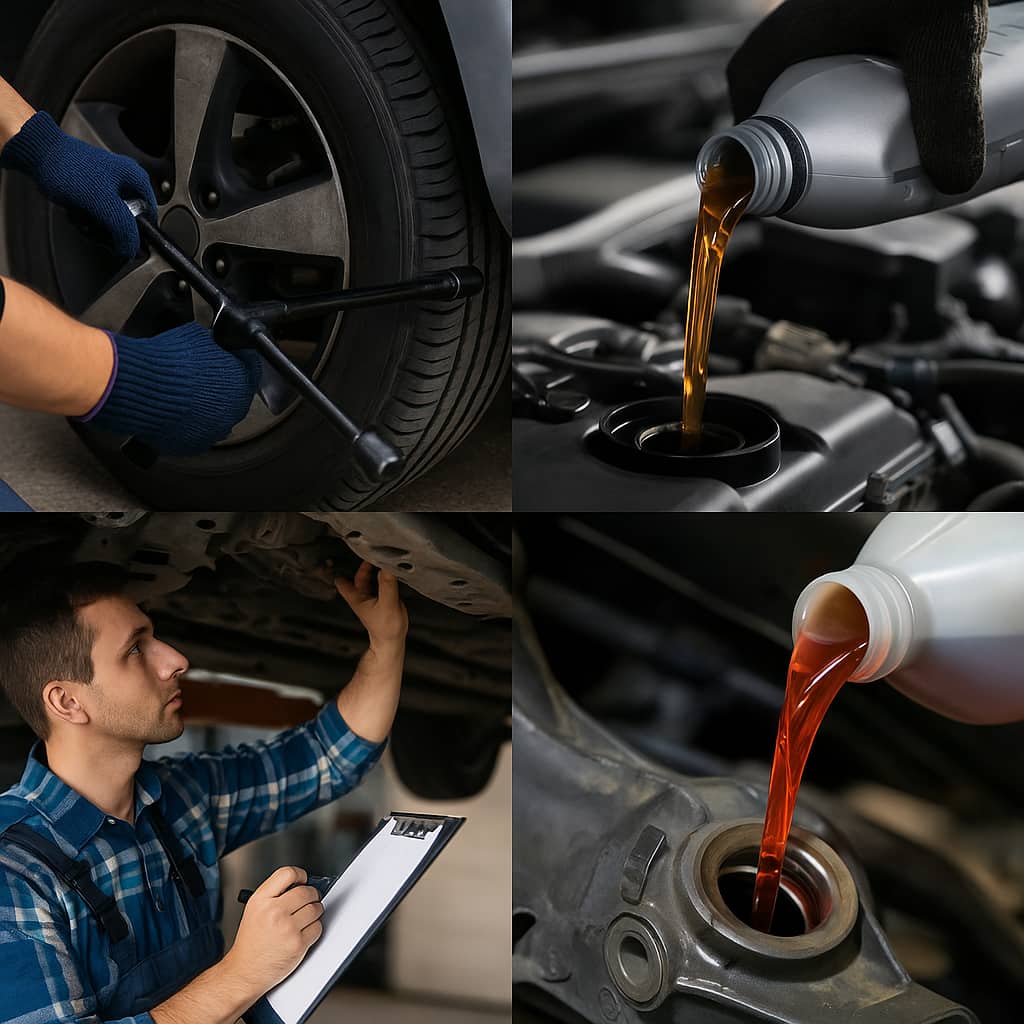Keeping a car on the road for many years takes a mix of attention, effort, and smart habits. Sure, you could just drive and ignore the regular maintenance, but that won’t get you far, especially when the unexpected happens.
A car that runs smoothly and stays on the road for years is not just the result of good fortune—it’s the product of regular care and attention to key maintenance tasks.
Today, we’re diving into five critical habits that are easy, affordable, and will make your car last longer, saving you money and stress in the long run.
From rotating your tires to checking your differential fluid, these simple tasks are your car’s best friends. So, buckle up, because by following these five tips, you can keep your car on the road for a lot longer—and avoid those pesky repair bills that can pop up out of nowhere.
1. Rotate Your Tires Regularly
Let’s get this one out of the way right off the bat. Tire rotation might seem like a small task, but trust us, it is one of the most effective ways to extend the life of your tires and ensure that your vehicle drives smoothly.
If you are not rotating your tires regularly, you’re making a huge mistake. Tires that wear unevenly or too quickly are not only dangerous—they are costly to replace.
Automakers typically recommend rotating your tires every 5,000 to 8,000 miles, which often lines up with your regular oil changes. So, it’s not like you have to remember a separate appointment or expense.
All you need to do is ask your mechanic to rotate the tires while they’re already working on your oil change. If you’re into DIY, this can be done at home with a jack and some basic tools, but most people find it easier (and safer) to have a pro do it.
Why is tire rotation so important?
Tires don’t wear evenly due to the different roles they play. The front tires wear faster due to steering and the weight of the engine, while the rear tires are less stressed.
If you don’t rotate them, you’ll end up with bald spots and uneven tread wear, and guess what? That means replacing tires far sooner than you’d like.
Here’s the kicker: if you rotate your tires regularly, you get more mileage out of them. That means you won’t be dropping $600–$700 on new tires every 30,000 miles. Some vehicles can easily stretch 50,000 miles or more on their tires if the rotations are done correctly.
Tip: Always check your vehicle’s manual for the correct rotation pattern, as some cars require a crisscross pattern, while others may need side-to-side swaps. Make it a point to get your tires rotated every oil change—it’s one of the cheapest maintenance services you can do, and it pays off in the long run.
2. Flush the Transmission Fluid on Schedule
Your car’s transmission is one of its most essential—and expensive—components. When the transmission goes, it can cost thousands to repair or replace.
That’s why transmission fluid flushes are so important. Regularly changing or flushing your transmission fluid ensures that the gears continue to work smoothly and that the system is well-lubricated.
Now, you might be thinking, “Transmission flush? Isn’t that a big deal?” It’s not as complicated as you think. While newer vehicles might boast “lifetime” transmission fluid, most experts still recommend a flush every 60,000 miles (or sooner if you’ve been towing or driving under heavy loads).
Keeping that fluid clean prevents the accumulation of grime and debris, which can cause your transmission to overheat or slip.
When your transmission fluid gets old and contaminated, it can lead to sluggish shifts or even complete transmission failure.
Tip: Don’t just top off the fluid—get a proper flush. If you decide to do it yourself, a basic drain-and-fill might suffice, but professionals can fully flush the system for optimal performance. Make sure you’re using the manufacturer’s recommended transmission fluid to avoid further issues.
3. Change Engine Oil Every 5,000–10,000 Miles
Engine oil is the lifeblood of your car. It keeps everything running smoothly by lubricating engine components, preventing friction, and helping to dissipate heat.
However, oil breaks down over time, collecting contaminants and losing its effectiveness. Neglecting to change your oil can lead to disastrous consequences, including engine failure.
The standard rule of thumb for oil changes used to be every 3,000 miles, but with modern engines and synthetic oils, that interval has stretched to 5,000–10,000 miles.
That said, never push your luck—some manufacturers still recommend oil changes every 7,500 miles, while some newer models can go up to 15,000 miles if you’re using full synthetic oil. If you’re unsure, aim for the lower end of that range.
The consequences of skipping oil changes are severe. Without fresh oil, the moving parts in your engine can start to grind against each other, causing metal-to-metal contact, which leads to wear and tear. Eventually, this could mean costly repairs, such as replacing the pistons or the entire engine.
Tip: If you do your own oil changes, use the correct oil grade as specified in your manual. And always change the filter along with the oil. Don’t be fooled by the “lifetime” oil ads—regular maintenance will save you way more than ignoring it.
4. Get Wheel Alignments as Needed
Alignment might seem like a minor issue, but trust me, it’s critical. If your car’s wheels are out of alignment, it can cause uneven tire wear, poor handling, and a rough ride.
Not to mention, misalignment can also hurt your fuel economy because the tires are fighting each other to move in different directions.
Improper alignment causes tires to wear down faster, meaning you’re going to be buying new tires far sooner than expected.
Additionally, you might notice your car pulling to one side, or the steering wheel might feel off-center. This happens when the camber, toe, or caster angles of your wheels are not in sync with the vehicle’s specifications.
If you don’t get the alignment checked, your tires will wear out unevenly—so you’re forced to replace them prematurely.
Tip: Most mechanics recommend getting a wheel alignment when you install new tires or if you notice any pulling, uneven tire wear, or if you’ve hit a significant pothole. It usually costs $80–$120 and should be done at least once a year to keep things running smoothly.
5. Change Differential Fluid Every 50,000 Miles
Let’s talk about your differential. If you drive a rear-wheel drive, four-wheel drive, or all-wheel drive vehicle, the differential helps your wheels rotate at different speeds, allowing you to turn corners smoothly.
The differential is filled with fluid that lubricates the gears inside. Over time, this fluid can degrade, causing your gears to grind and the whole system to malfunction.
If you don’t change the differential fluid, you risk expensive repairs. The fluid breaks down, and without it, the gears can wear down or break.
A quick, relatively cheap service will save you a lot of headaches later. Most manufacturers recommend changing the differential fluid at 30,000 to 60,000 miles, depending on your driving conditions.
Tip: Check your vehicle’s manual for the specific interval for differential fluid changes. If you’re off-roading or towing, you might need to change it more frequently. Most mechanics charge under $100 for the job, and it’s a lot cheaper than replacing a differential.
Conclusion
When it comes to making your vehicle last longer, maintenance is key. These five simple, affordable tasks—rotating your tires, flushing your transmission fluid, changing oil regularly, getting wheel alignments, and changing differential fluid—are all essential for maximizing the lifespan of your car.
They not only save you money but also improve performance, safety, and comfort. By taking a few minutes every few months to stay on top of these tasks, you’re preventing much bigger, costlier issues down the road.
So, what’s the moral of the story? Treat your car with respect, stay on top of your routine maintenance, and it will reward you with many more trouble-free miles.

